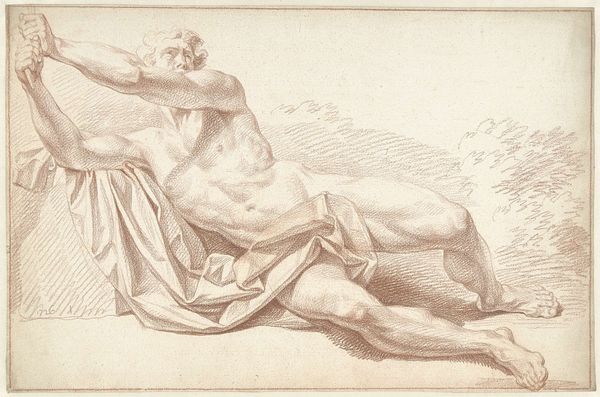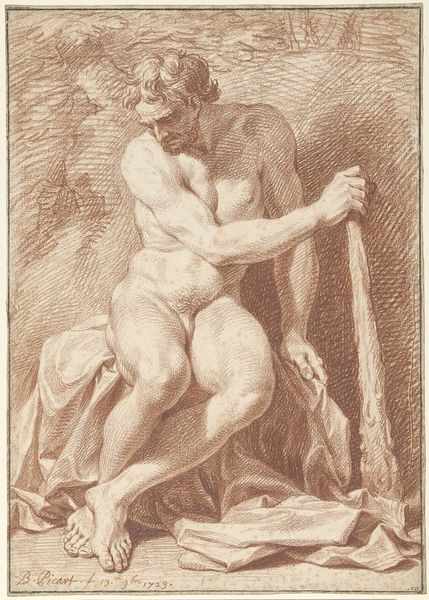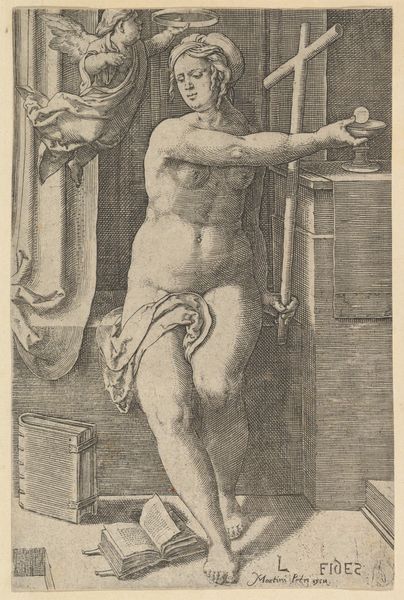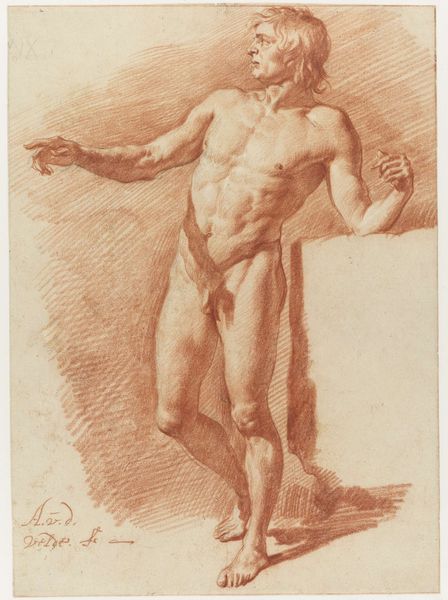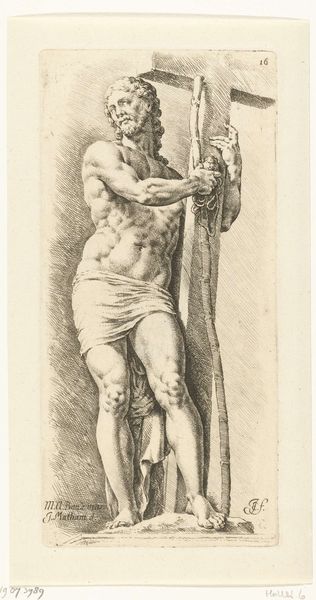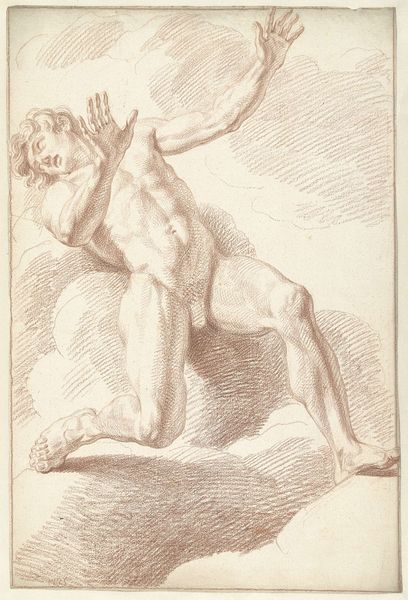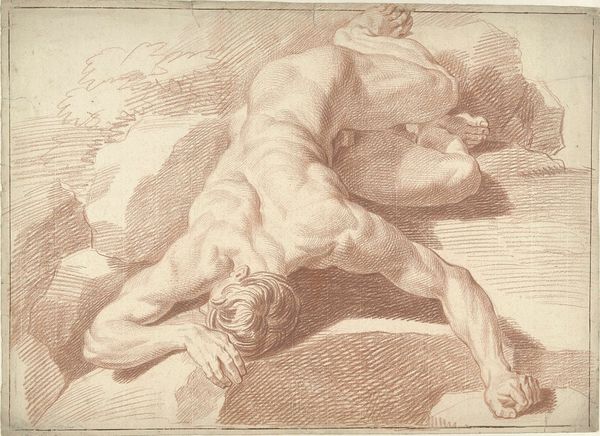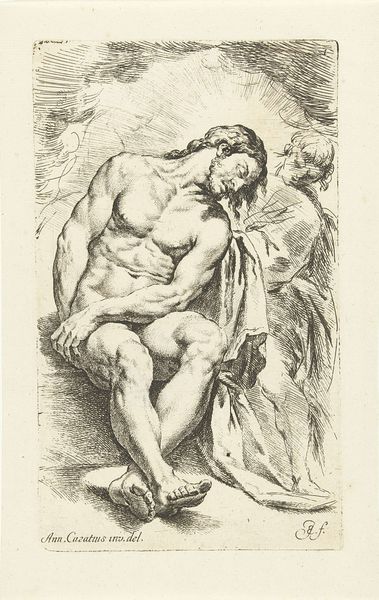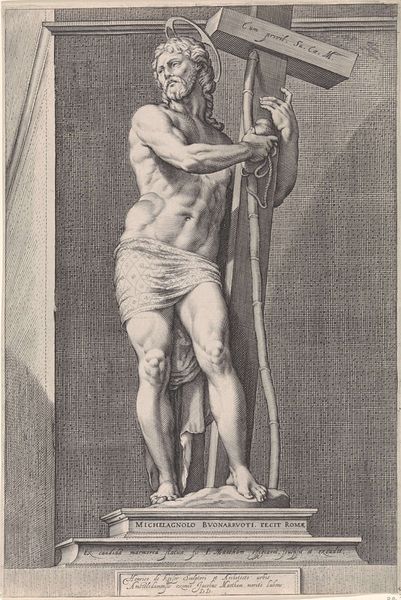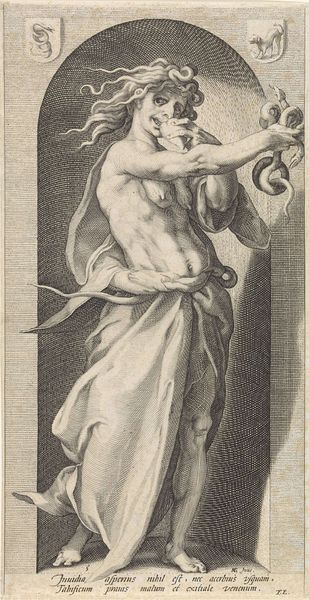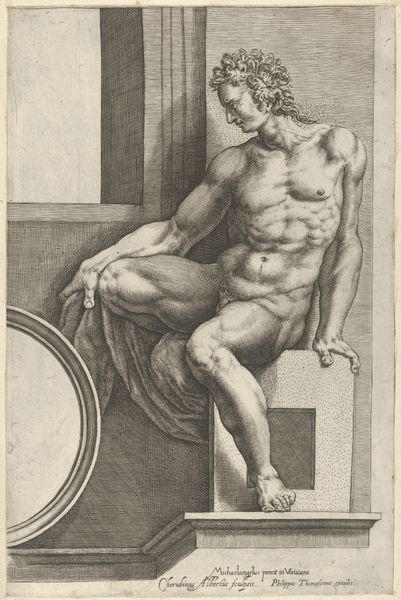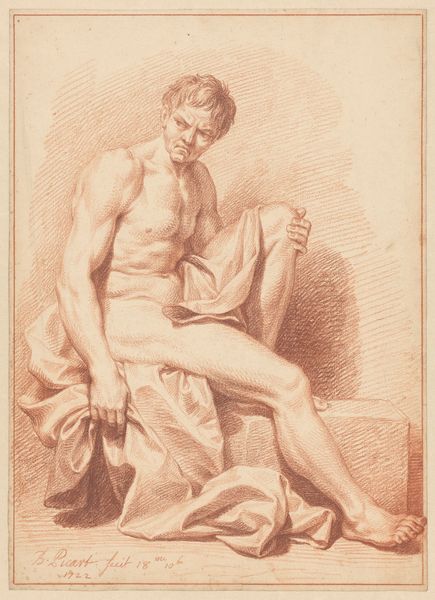
Studie van zittende man met omgeslagen draperie c. 1703 - 1775
0:00
0:00
drawing, pencil
#
portrait
#
drawing
#
baroque
#
pencil sketch
#
classical-realism
#
charcoal drawing
#
figuration
#
pencil drawing
#
pencil
#
portrait drawing
#
academic-art
#
nude
Dimensions: height 452 mm, width 333 mm
Copyright: Rijks Museum: Open Domain
Curator: This is a drawing titled "Studie van zittende man met omgeslagen draperie," created sometime between 1703 and 1775, attributed to Louis Fabritius Dubourg. It’s currently housed here at the Rijksmuseum. Editor: There’s an immediate sense of melancholy. The figure, draped in what appears to be heavy cloth, looks quite despondent, his face obscured by his hand. The ochre pencil marks create a monochromatic, somewhat somber mood. Curator: Dubourg, working within the Baroque and early academic traditions, often produced studies like this, likely for larger compositions. Examining the process and materials offers a way into understanding the academic methods of the time. The precise strokes, building up the figure’s form, were likely done for didactic purposes, probably within an atelier setting. Editor: Indeed. Drawings like these were critical in academies; a mastery of the human form, often nude, was essential. One can consider the role of the art institutions shaping not only art production but taste and ideological norms. It wasn’t just about artistic skill; it was also about transmitting certain ideals regarding beauty, heroism, and power that reflect the broader sociopolitical environment of the era. Curator: And it’s vital to see these drawings, with their subtle shading and strong emphasis on musculature, as objects created with the express intent of replicating Classical ideals in a controlled and measurable environment. The paper itself is also worth noting - likely a commercially available sheet sized specifically for artistic use. The materials used impact what the finished artwork is! Editor: Thinking about that, these "academic exercises" shaped a vision of masculinity – strong, but burdened – which inevitably bled into official portraiture and depictions of power. Considering that public role and impact can reveal complex questions about how art legitimized existing social hierarchies. Even these supposed ‘studies’ had the social work to perform that paintings later capitalised on. Curator: Agreed. Recognizing that the creation and consumption of images weren’t, and aren’t, separate from systems of power is fundamental. This drawing offers us a chance to reflect upon these processes. Editor: Ultimately, the interplay between this work and the institutional framework of the art world provides valuable insight into its ongoing historical legacy and effect. It's been interesting considering the wider significance here.
Comments
No comments
Be the first to comment and join the conversation on the ultimate creative platform.
